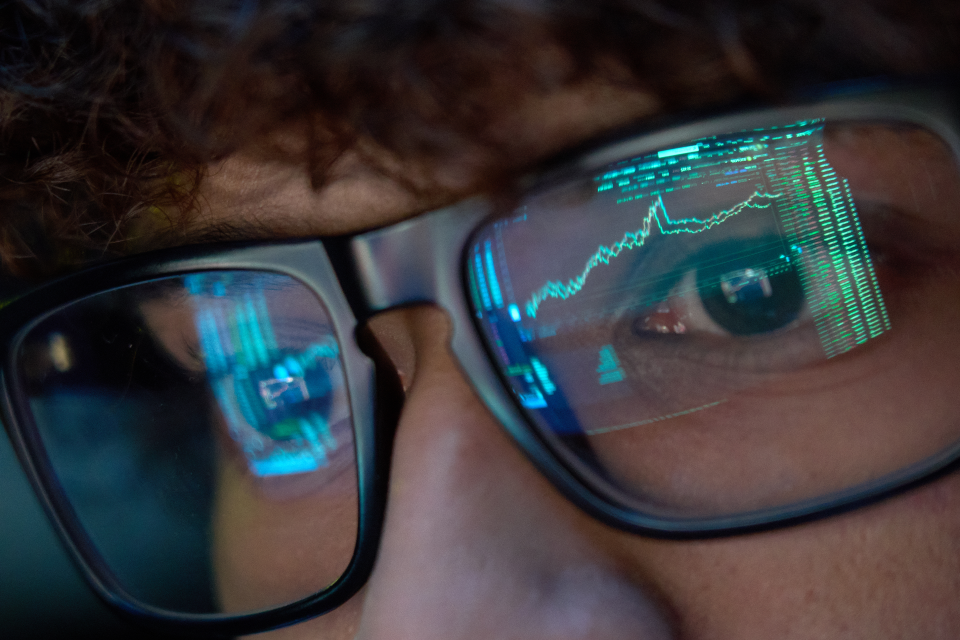Key takeaways:
- Globally, commodity markets are experiencing unprecedented market swings, and the traditional forecast models are broken
- Industries have been slow to adopt cutting-edge technology to improve forecasting decision support
- With DecisionNext, decision makers now have access to the AI tools they need to make smart, defensible decisions
Price volatility is more extreme than it’s ever been.
Everything in the commodity industries over the last several years has been turned on its head. Most markets have been experiencing a time of unprecedented price fluctuations. The price movements that you traditionally expect to happen are NOT occurring—such as prices going up when demand goes down. Chaos has become the new norm.
Why is this happening?
There are two main contributing factors:
- Relying on traditional forecasting methods and rules of thumb, just don’t cut it anymore. Time-honored techniques have become outdated and ineffective virtually overnight. One strong example where we have seen this is in U.S. protein markets where the time-tested relationship between cattle prices and beef prices that the industry had come to rely on for forecasting started to break down.
- Even industry leaders are underutilizing technology. Most companies trading commodity products are coming to the conclusion that they need AI to power their business. It was the enormous impact of large language models (LLMs) like ChatGPT that put this idea in people’s heads. Of course, at DecisionNext, we’ve been powering all insights and decision support with the best-in-class AI and ML since we started back in 2014.
But in contrast, for most major players in commodity industries, these are relatively new concepts.
For example, in the mining industry, exploration, mine optimizing, and hardware improvement have been areas of major investment. In contrast, not nearly as much focus has been placed on harnessing the power of software to geographic arbitrage, strategic marketing, and improving deal structures. Investing in this technology will have a massive impact on margin and profitability.
Every organization needs a modeling tool fit for today’s market uncertainty.
Despite huge advances in AI and other cutting-edge technology, a lot of decision makers in the commodities industries haven’t had access to the tools they need to make smart, defensible choices. They simply did not exist. That is, until now.
Enter Mike Neal, CEO and founder of DecisionNext. As a forward-thinking leader, he’s made it his mission to drive innovation in the commodities landscape. And DecisionNext does just that. It’s a best-in-class AI platform that helps companies buy and sell commodities at the best times, with the best formulas, at the best prices. This next-gen solution goes beyond Market Forecasting, and has revolutionized how commodity price and supply forecasting support business decisions. And it is the only platform that incorporates expert users’ wisdom in its algorithms.
An impressive track record of innovation.
When it comes to the evolution of forecasting and decision support systems space, Mike has always been a visionary. He’s a serial entrepreneur, so it’s nothing new. It’s important to note that DecisionNext didn’t just happen overnight. It’s the perfect storm of timing, experience, and global circumstance. The company has been growing steadily over the past four years, forging significant partnerships with companies including Amazon Web Services (AWS), both here in the US and internationally.
It started back in the late 1990s with Nonstop Logistics. This was software that enabled “flow-through logistics,” which was made possible through advances in sales forecasting technology, combined with new thinking on the power of inventory pooling. The second company DemandTec was a natural evolution out of that. It offered a platform that dealt with retail shelf price optimization. And that paved the way to SignalDemand, which really laid the foundation for DecisionNext because it was all about commodity price forecasting.
Shaping the core of DecisionNext.
All these experiences were valuable in that they came together to help us shape and form DecisionNext into what it is today. As with any journey, there were key learnings along the way, which helped us create and define DecisionNext.
- Lesson 1: A good commodity price forecast is a means not an end. From a technical
perspective, it’s certainly difficult to build the very best commodity forecast
available in a given sector. But in terms of value add, you need to apply that
forecast in rigorous decision framework. That’s what DecisionNext does. - Lesson 2: Getting input directly from our user is valuable. It almost sounds silly when
you say it—like, of course it’s valuable. But in our previous companies, we hadn’t
thought to add functionality to make this happen. That’s why DecisionNext
incorporated four methods for users to input crucial market insights not yet
reflected in the available data. And like magic, the forecasts started
getting better.
A platform that’s commodity agnostic.
An important question that comes up a lot for us is “Which commodity markets does this stuff work, and where does it fall flat?” The easy answer is that DecisionNext will have a significant impact on any industry with price volatility. If there’s an underlying structure in its pricing, that’s ideal. And by that we mean seasonality, and a reasonable correlation with underlying supply. The exceptions to this are, of course, luxury commodities, like gold and diamonds.
Unprecedented market swings deserve an unprecedented decision support system.
Navigating the turbulent commodities industry is more challenging than ever. It’s a moving target. And to keep ahead of the curve, you need to evolve and adapt with the times and the ever-changing landscape. Your tools and approach should be just as dynamic. DecisionNext has the proven experience and expertise across all commodities to help your business not only survive, but thrive. Powerful decision making tools that didn’t exist are now available, so you can stop making excuses, and start making better business decisions.










